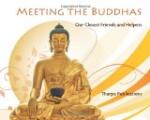Birds soon find out when man is their enemy, and then become wild and shy; but they are always willing to become our friends again. If we can make them understand that when near us they are safe, they will show their faith in our good-will.
The wild eider-duck makes her nest and lays her eggs in the huts of the Icelanders because she knows that she will not be harmed. In nesting time the birds may be seen in the village streets. They are so tame that one might think they were domestic ducks.
In Europe the storks build upon the house-tops. The peasant welcomes them as friends when each spring they return to their home. He is glad to have them near him, and he places an old cart-wheel on top of his house as a foundation for their nest of sticks.
Near some of the steamboat landings in Florida no shouting is allowed. The wild ducks and coots quickly learn to know where they are safe, and in these places they are very tame, so that one can walk quite near them. But when they are outside the spot in which they are protected they are as shy as the wildest ducks.
Throughout the South it is against the law to kill the buzzards or vultures. These birds are very useful. They are public scavengers, devouring many things which would cause disease. The birds know that they have no one to fear and they hop about the streets as tame as chickens.
You see, therefore, that the birds will trust us when they learn that we are their friends. If you would encourage them to make their home near yours, you might provide little boxes for them to occupy or make holes in hollow limbs where they can place their nests.
They enjoy, too, a trough of water in which they can bathe. When winter comes a piece of tallow in the trees will prove a rich treat to the chickadee, and a few seeds scattered on the snow will make a feast for the hardy snowbirds.
[Illustration with caption: Bird-house. Made from a bark-covered log, 8 inches long and 8 inches in diameter, a hole 5 inches in diameter “being bored from end to end, leaving an outer wall 1 1/2 inches thick.”—From “Bird-Lore” by permission of The Macmillan Company.]
FEATHERED TRAVELERS.
Some birds are great travelers. They may pass the summer in the Arctic regions and in the autumn go to Patagonia to spend the winter. Is it not wonderful how they can make this long journey without a compass or map to guide them?
Generally they follow rivers or coast lines; but they may have to cross large bodies of water where no land can be seen Still they find their way to and fro, returning each year to the same place Sometimes they even use the nest they built the year before.
Large birds and those which can fly swiftly, like swallows, are not afraid to travel by day. But the little birds, like wrens and warblers, that live in the shelter of trees and bushes, wait for the night.




